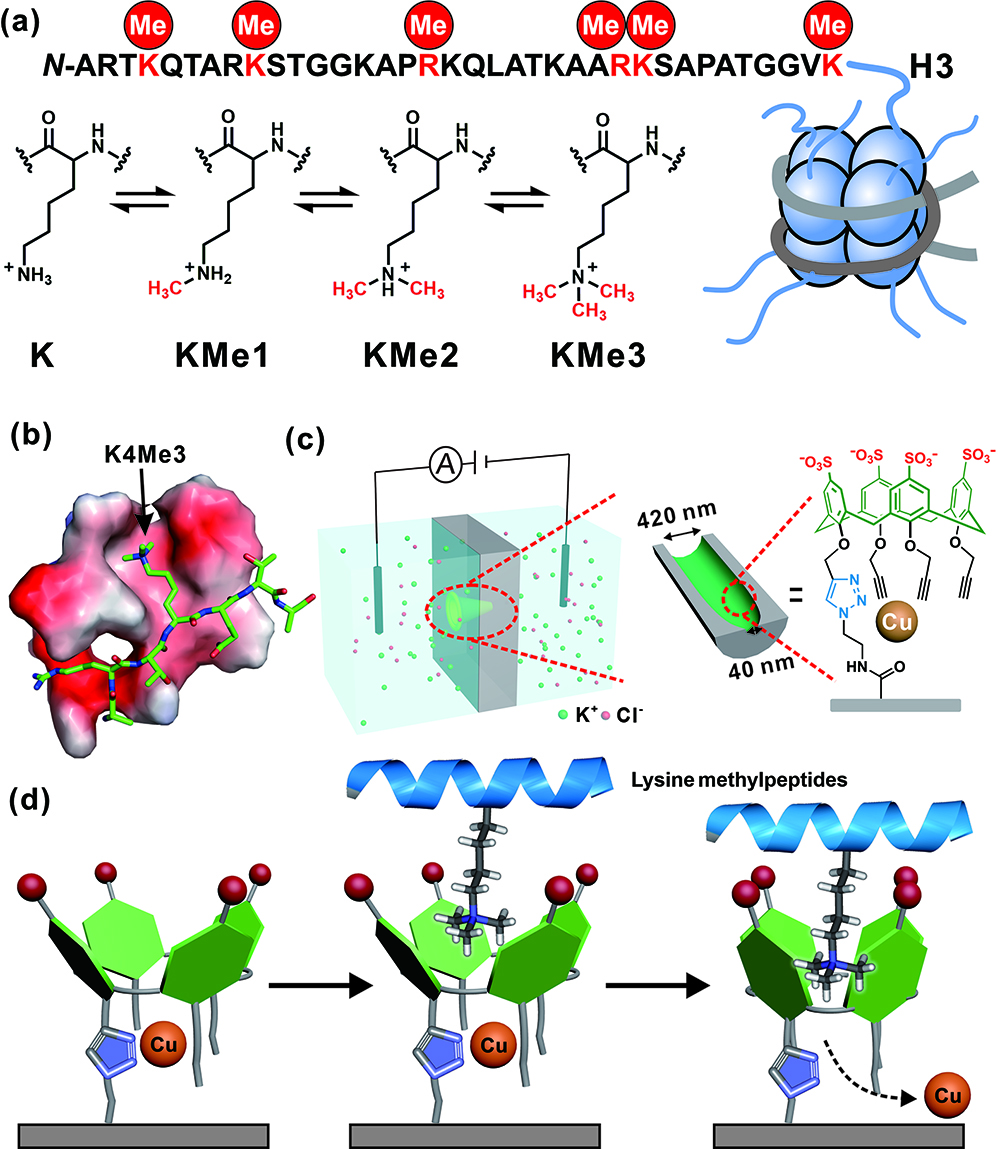Nanofluidic Device for Detection of Lysine Methylpeptides and Sensing of Lysine Methylation
Time:2023-05-04 14:38 Author:Yuting Xiong
Yuting Xiong, Minmin Li, Yuchen Cao, Zan Li, Yongxin Chang, Xinjia Zhao, and Guangyan Qing*
Anal. Chem. 2023 DOI: 10.1021/acs.analchem.3c01074
https://doi.org/10.1021/acs.analchem.3c01074
Protein methylation is the smallest possible yet vitally important post-translational modification (PTM). This small and chemically inert addition in proteins makes the analysis of methylation more challenging, thus calling for an efficient tool for the sake of recognition and detection. Herein, we present a nanofluidic electric sensing device based on a functionalized nanochannel that was constructed by introducing monotriazole-containing p-sulfonatocalix[4]-arene (TSC) into a single asymmetric polymeric nanochannel via click chemistry. The device can selectively detect lysine methylpeptides with subpicomole sensitivity, distinguish between different lysine methylation states, and monitor the lysine methylation process by methyltransferase at the peptide level in real time. The introduced TSC molecule, with its confined asymmetric configuration, presents the remarkable ability to selectively bind to lysine methylpeptides, which, coupled with the release of the complexed Cu ions, allows the device to transform the molecular-level recognition to the discernible change in ionic current of the nanofluidic electric device, thus enabling detection. This work could serve as a stepping stone to the development of a new methyltransferase assay and the chemical that specifically targets lysine methylation in PTM proteomics.
